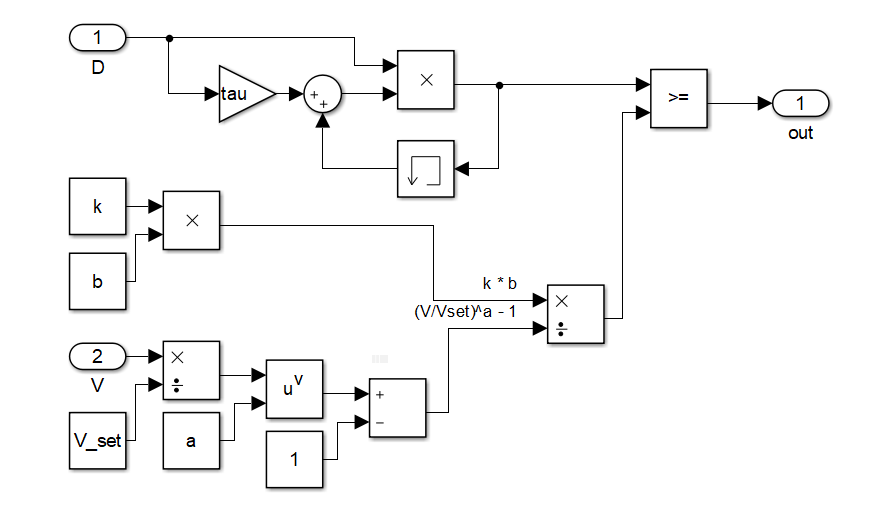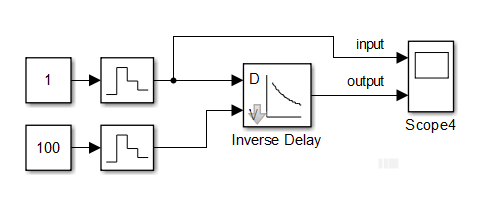Inverse time delays are used to implement protections, the response time of which depends on the value of the input quantity. The use of inverse time delays can reduce the trip time of close short circuits with high currents, while ensuring selectivity of protection.
In [1], a formula is given that describes the dependence of the time delay on the value of the input current I

where k, α, β – coefficients determined by the type of characteristic, Iset – setting.
There are several standard characteristics for which the coefficients α and β are given in tab. 1.
Tab. 1. The values of the coefficients for different types of inverse characteristics

| Type | α | β |
| Inverse (INV) | 0,02 | 0,14 |
| Very inverse (VERY) | 1,0 | 13,5 |
| Extremely inverse (EXT) | 2,0 | 80,0 |
| Long inverse (LONG) | 1,0 | 120,0 |
The implementation of the inverse time delay in Simulink is given in the attached file inverse_delay.mdl. The type of circuit is shown in Fig. 1. This time delay is not integral, that is, it does not take into account equipment heating when the input value changes.
This time delay has 2 inputs – one discrete from the relay, the second input is analog, to which the observed current is supplied.

Fig. 1. Implement inverse time delay in Simulink
We test the obtained time delay with an inverse characteristic. For this we will use the circuit shown in Fig. 2.

Fig. 2. Scheme for testing inverse time delay in Simulink
Set the time delay parameters for the “inverse” characteristic type, set the coefficient value k = 0.1 and calculate in Matlab the expected time delay value for the input current of 100 units with the setting of 10 units.
>> k = 0.1; a = 0.02; b = 0.14; Iust = 10; I = 100; >> Tust = k * b / ((I/Iust)^a - 1) Tust = 0.2971
In fig. 3 presents the results of the inverse time delay. From the results it can be seen that the output value is the same as expected.

Fig. 3. Test results for inverse time delay
So, we simulated and tested the inverse time delay.
References
- Shneyerson E.M. Tsifrovaya releynaya zashchita. – M.: Energoatomizdat, 2007.